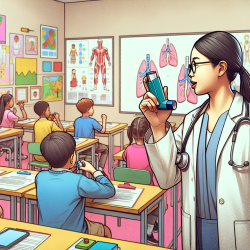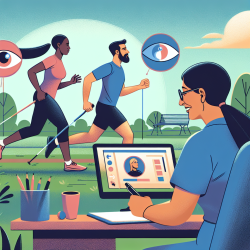Introduction
In the ever-evolving field of chiropractic care, the integration of psychosocial factors into the educational curriculum is paramount for fostering holistic patient care. The research article titled The prevalence of psychosocial related terminology in chiropractic program courses, chiropractic accreditation standards, and chiropractic examining board testing content in the United States underscores the need for a comprehensive approach to chiropractic education. This blog delves into the findings of this study and offers actionable insights for practitioners to enhance their skills and encourage further research.
The Importance of Psychosocial Factors
Spine-related disorders (SRDs) are complex conditions influenced by a combination of biological, psychological, and social factors. The biopsychosocial (BPS) model provides a framework for understanding this multidimensional nature. Despite the evidence supporting the BPS model, the study reveals that psychosocial considerations are underrepresented in chiropractic education in the United States.
Key Findings from the Study
The study examined the prevalence of psychosocial terminology in Doctor of Chiropractic Program (DCP) curricula, Council on Chiropractic Education (CCE) standards, and National Board of Chiropractic Examiners (NBCE) test plans. Here are some key findings:
- The term ‘public’ is the most commonly used psychosocial term in DCP curricula.
- Psychosocial terminology is used in a range of 3.40% to 14.86% of course content across various institutions.
- CCE uses psychosocial terminology 17 times across 5 out of 8 meta-competencies.
- NBCE includes psychosocial terminology in test plans I and II, but not in III or IV.
Implications for Practitioners
The underrepresentation of psychosocial factors in chiropractic education has significant implications for practitioners. Addressing this gap can lead to better patient outcomes and more comprehensive care. Here are some steps practitioners can take:
1. Advocate for Curriculum Enhancement
Practitioners can play a crucial role in advocating for the inclusion of more psychosocial content in chiropractic curricula. Engaging with educational institutions and accrediting bodies to emphasize the importance of the BPS model can drive meaningful change.
2. Continuing Education and Professional Development
Practitioners should seek out continuing education opportunities that focus on psychosocial aspects of patient care. This can include workshops, seminars, and online courses that provide deeper insights into the psychological and social determinants of health.
3. Implementing the BPS Model in Practice
Incorporating the BPS model into daily practice involves understanding and addressing the psychological and social factors that influence patient health. This holistic approach can lead to more effective treatment plans and improved patient satisfaction.
Encouraging Further Research
The study highlights the need for further research to explore the impact of psychosocial education on chiropractic practice. Practitioners can contribute to this body of knowledge by participating in research studies, sharing case studies, and collaborating with academic institutions.
Conclusion
Integrating psychosocial factors into chiropractic education and practice is essential for delivering holistic and effective patient care. By advocating for curriculum enhancements, pursuing continuing education, and implementing the BPS model, practitioners can improve their skills and contribute to the advancement of the chiropractic profession.
To read the original research paper, please follow this link: The prevalence of psychosocial related terminology in chiropractic program courses, chiropractic accreditation standards, and chiropractic examining board testing content in the United States.










